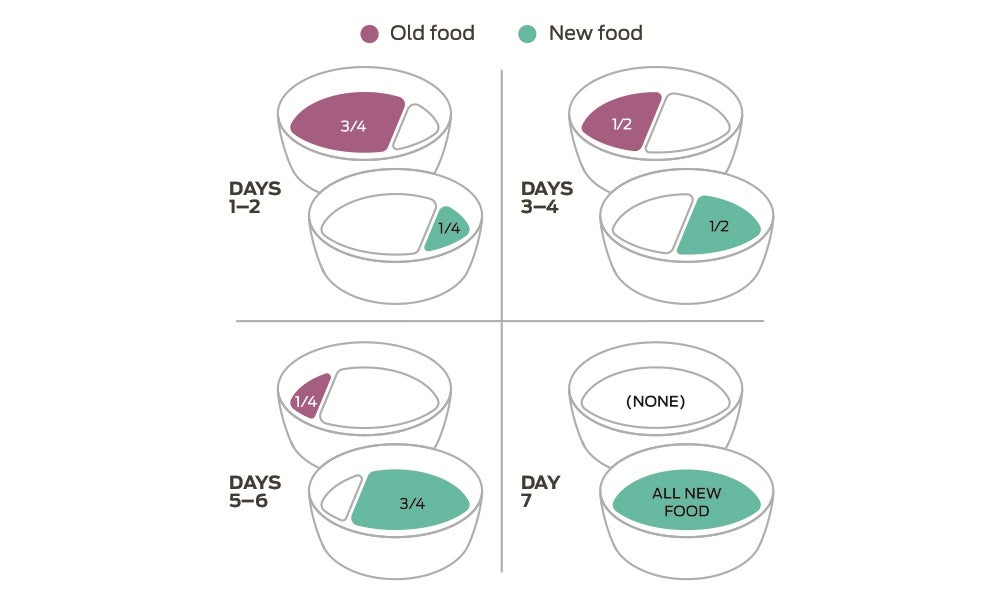Practice Scenario

Meet JEMMA
A 3-year-old, spayed-female Domestic Shorthair
- Jemma is at the clinic for an annual physical examination and vaccinations.
- Her owner reports that Jemma eats both wet and dry commercial cat foods. She receives two meals of canned food each day and can feed freely on kibble. The owner believes this helps keep Jemma hydrated and allows her to eat small, frequent amounts throughout the day, which is typical feeding behavior for cats.
- An indoor cat with a body condition score (BCS) of 8 to 9 on the 9-point scale (8-9/9), Jemma is overweight. However, her owner believes Jemma is simply “big boned.”
Changing Diets
Switching Pet Foods - Cats
Gradually transitioning onto a new diet will minimize the risk of stomach upset or other issues. In order not to overfeed – check the feeding guidelines on the new food and the recommended amount for the cat’s weight (assuming the pet has a good body condition score).
Gradually replace ¼ of the current food with the ¼ of the new food every 2nd day using separate bowls for the current and new foods – do not mix them in the same bowl. This allows cats to choose between the foods rather than having the change forced upon them, which can lower stress. After 7 days, the switch over to the new food is complete.
If a pet is susceptible to stomach upset, it may be beneficial to transition over 10 days.

